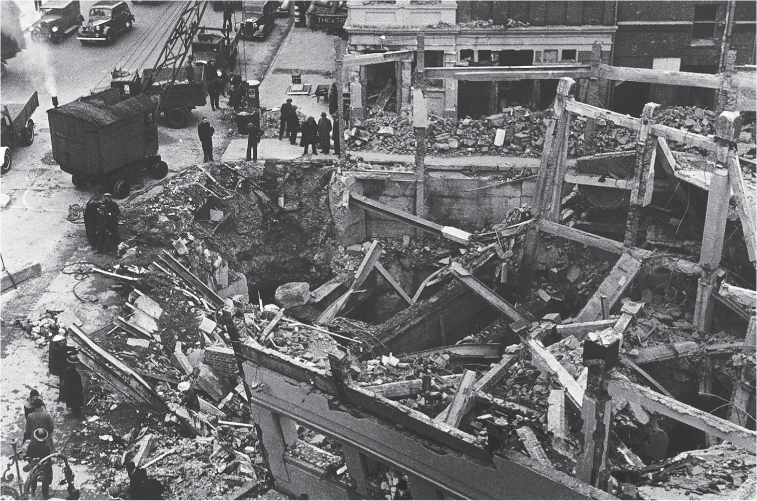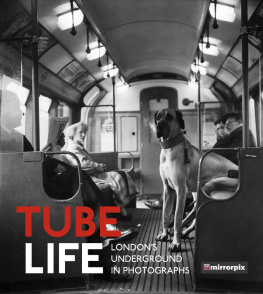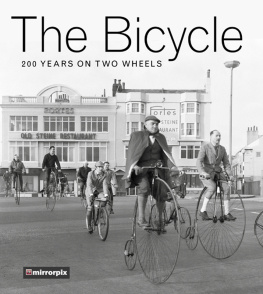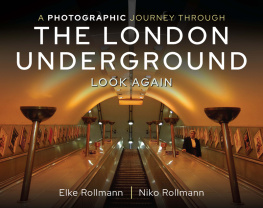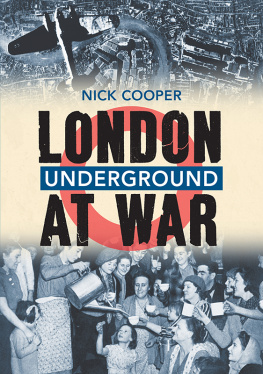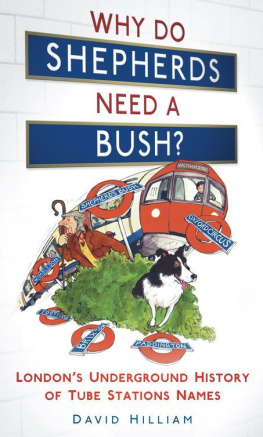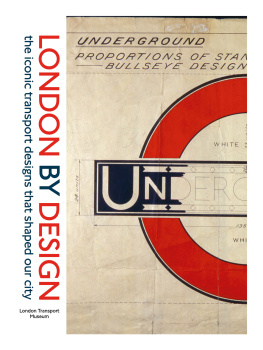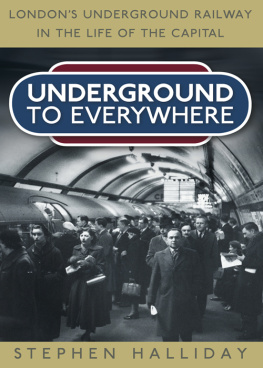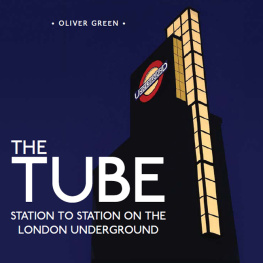Contents
Guide
First published 2018
The History Press
The Mill, Brimscombe Port
Stroud, Gloucestershire, GL5 2QG
www.thehistorypress.co.uk
Mirrorpix, 2018
The right of Mirrorpix to be identified as the Author of this work has been asserted in accordance with the Copyright, Designs and Patents Act 1988.
All rights reserved. No part of this book may be reprinted or reproduced or utilised in any form or by any electronic, mechanical or other means, now known or hereafter invented, including photocopying and recording, or in any information storage or retrieval system, without the permission in writing from the Publishers.
British Library Cataloguing in Publication Data.
A catalogue record for this book is available from the British Library.
ISBN 978 0 7509 8970 1
Typesetting and origination by The History Press
Printed in Turkey by Imak
eBook converted by Geethik Technologies
INTRODUCTION
The London Underground has always been key to the lives of Londoners; from when its stations and stairwells offered refuge from the barrage of the Blitz to its ability to transport 4.8 million people every day. Much like the people it transports, it is resilient to threat and horror, standing strong in the face of war, terrorism and tragic accidents.
The Underground was the worlds first underground railway, opening in 1863 as the Metropolitan Railway, and is now the eleventh busiest metro/subway in the world. It is an art and design icon, with instantly recognisable fonts and branding and an unmistakeable map!
But the Tube has never sat on its laurels, instead constantly building and reshaping to fit London. New lines and stations are always being built, new trains commissioned, and better accessibility is being strived for. It is home to the largest infrastructure project in Europe: the Elizabeth line, due to open in December 2018. The second line to be named after Elizabeth II, this will stretch right across central London, linking Reading and Heathrow to Shenfield and Abbeywood. It will be another vital artery feeding into the beating heart of the capital.
Tube Life is a celebration of those arteries, but also the people that keep the Underground alive through shelters and bombings, derailments and disasters, to escapades and adventures. Mirrorpix, a formidable photo archive of contemporary images, has opened its doors to reveal the day-to-day life of a worldwide icon.

Excavations for the new Uxbridge Underground Station in 1936.


Another photo from the 1936 excavations in Uxbridge.

Platforms under construction at the Underground station, Uxbridge, 1936.
THE BLITZ
When the Luftwaffe took to the air, Londoners took to the ground. There were no large communal air raid shelters in London, so the Tube stations took this role. Originally the government banned using Tube stations as shelters, but were forced to change their mind when faced with hordes of scared citizens waiting outside the stations each night.
While only 4 per cent of Londoners used the Tube for shelter, its thought that this percentage was made up of those living and working in the centre or the docks the most vulnerable. The Tube was there for those who needed it most.

September 1940. Families take cover from the Luftwaffe bombing of London in this disused Underground tunnel.

30 September 1940. Lance-Corporal Herbert K. Knightley (front left) and his bride, Miss Irene Bavin (front right) in their bridal chamber. They settled down to sleep after relatives had drunk to their health. The Mirror reported:
Bombed out of her home twice in a fortnight, a twenty-year-old bride spent the first night of her wedding with her soldier husband in an underground air raid shelter in Heston (Middlesex). The parents of both the bride and the bridegroom sat at their side. The girl was Irene Bavin, of Southwell-road, Camberwell. A few hours after the wedding she and her bridesmaids took off their silk dresses, put on day frocks, and went to the shelter. The young husband, Lance-Corporal Herbert Kitchener Knightley, twenty-four, of West Way, Heston, blushed when the 200 men, women and children in the shelter called out good wishes as the bridal party walked down the steps. Then, while A.A. guns boomed outside, relatives drank their health as they sat on benches along the walls.
It is not a bit like I imagined my wedding night would be a few weeks ago, the bride told me before she and her husband settled down for the night, with travelling rugs around their shoulders. Were lucky, but I suppose we were lucky to have a wedding at all. My family and I were bombed out of our home at Brixton. Then we moved to a relation nearby, and were bombed out of their home, too. So we came to live with Herberts mother. She turned to her husband. But we are happy dear, arent we?
Yes, replied Lance-Corporal Knightley, And still keeping our chins up. The bride did not know until the previous day whether the young soldier would be able to get leave for the wedding, although the date had been fixed and the banns read. Im not particular on going to the shelter, Lance-Corporal Knightley said. But it is better for Irene.

November 1940. A woman fixes her mattress and pillows on the top bunk of her bed as she prepares for a nights sleep in an air raid shelter.

13 October 1940. The Womens Voluntary Service serve tea and sandwiches to people in the Liverpool Street Underground air raid shelter.

21 September 1940. A mother tends to her young son while her daughter settles into a bed made from a wooden fruit box. Its estimated that 177,000 people were using the London Underground for shelter by the end of September 1940.
